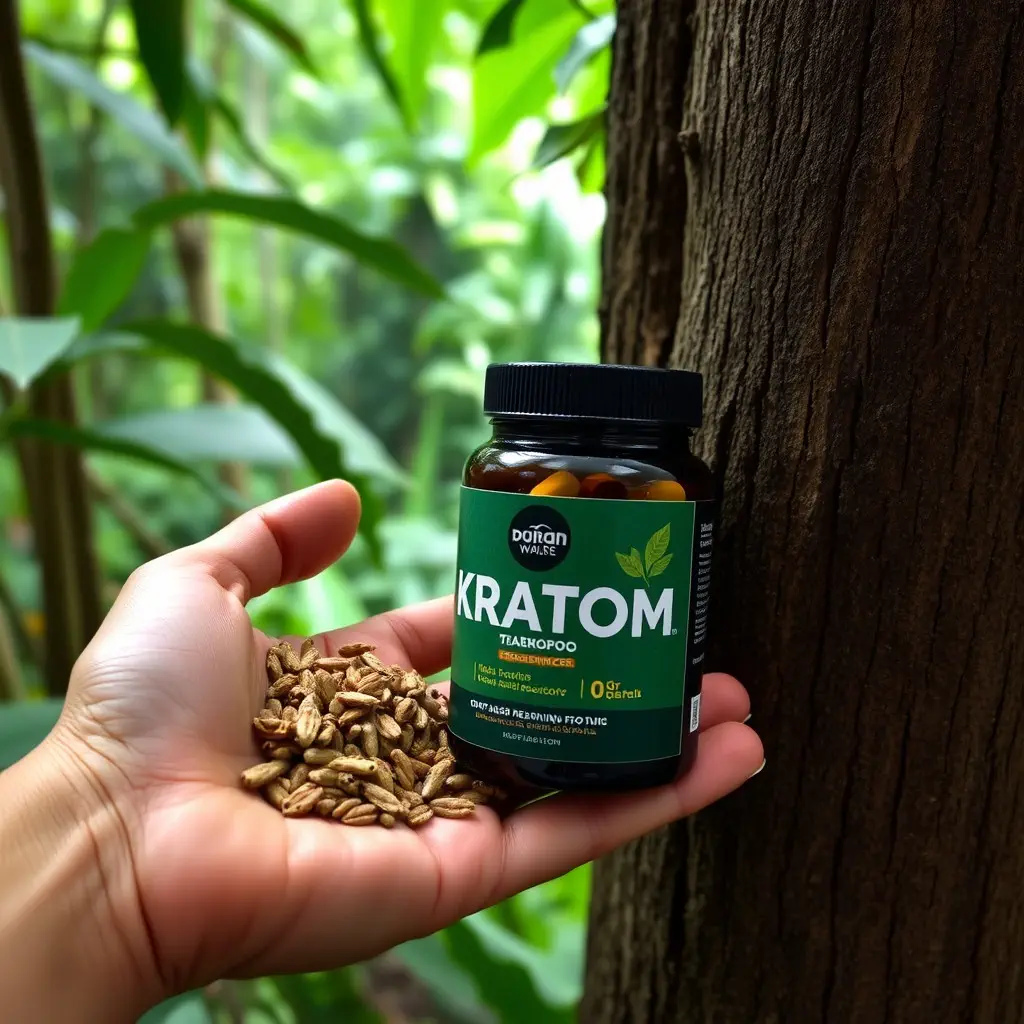Kratom, derived from the Mitragyna speciosa tree, has been explored as a potential therapeutic aid for opioid addiction due to its interaction with opioid receptors and presence of alkaloids like mitragynine and 7-hydroxymitragynine. Its traditional use in Southeast Asia for stimulating and pain-relief effects has some parallels to cinnamon's popularity, though this is more anecdotal than scientifically validated for medical purposes. Researchers are examining kratom's efficacy in alleviating withdrawal symptoms and cravings associated with opioid dependency, but further studies are needed to clarify its mechanisms and safety profiles to inform evidence-based treatment protocols. The DEA's regulatory stance on kratom reflects the complex balance of its potential benefits and risks of abuse. Ongoing research aims to explore kratom's integration into treatment plans, with a focus on supporting individuals in their recovery process while preventing misuse. Balancing the exploration of its therapeutic properties with the prevention of misuse is crucial for shaping its role in addiction treatment and ensuring it is used responsibly. The legal status of kratom remains a subject of regulatory attention, emphasizing the need for cautious usage under professional guidance, including products that might be infused with cinnamon online, which can influence efficacy or taste. Ethical considerations and informed consent are vital as kratom's therapeutic use continues to be debated and researched. It is imperative for ongoing research to assess kratom's safety and effectiveness to refine policy, treatment protocols, and guidelines for those navigating recovery from addiction.
Kratom, derived from the Southeast Asian tree Mitragyna speciosa, has garnered attention as a potential aid in addiction treatment and recovery. This article delves into the multifaceted role of kratom, exploring its scientific mechanisms that may contribute to pain management and recovery. As we unravel its potential, we also navigate the complex legal landscape surrounding its use, alongside ethical considerations crucial for informed decision-making in substance abuse treatment. Furthermore, recent research suggests a promising synergy between kratom and cinnamaldehyde, a compound found in cinnamon online, which could enhance addiction recovery outcomes. This exploration aims to provide a comprehensive understanding of kratom’s place in the recovery journey from addiction.
- Unraveling Kratom's Role in Addiction Treatment: A Closer Look at Mitragyna Speciosa
- The Science Behind Kratom: Understanding Its Mechanisms for Recovery and Pain Management
- Navigating the Legal Landscape and Ethical Considerations of Using Kratom for Substance Abuse Treatment
Unraveling Kratom's Role in Addiction Treatment: A Closer Look at Mitragyna Speciosa

Kratom, derived from the leaves of the Mitragyna speciosa tree, has garnered attention in the realm of addiction treatment due to its potential therapeutic properties. Traditionally used in Southeast Asia for its stimulant and analgesic effects, which some liken to those of cinnamon—though the comparison is not scientifically substantiated for medical purposes—kratom interacts with the body’s opioid receptors, offering a complex pharmacological profile. Its alkaloids, including mitragynine and 7-hydroxymitragynine, may play a role in mitigating withdrawal symptoms and cravings associated with opioid addiction. Emerging research is unraveling kratom’s effects, exploring its potential as an adjunct treatment to manage withdrawal and reduce the severity of cravings, which are common challenges in recovery. As interest in kratom for addiction treatment grows, it is crucial for further studies to elucidate its mechanisms and establish clear guidelines for its use within evidence-based treatment protocols.
The exploration of kratom’s role in addiction treatment is a multifaceted endeavor that requires careful consideration of its therapeutic potential as well as its regulatory status. In the United States, the Drug Enforcement Administration (DEA) has placed kratom in a controlled substance schedule, reflecting concerns over its abuse and potential for dependency. However, advocates argue that with proper regulation, kratom could offer a natural alternative to traditional medications for those seeking relief from addiction. As research continues, the focus remains on understanding how kratom can be effectively integrated into treatment plans, potentially aiding individuals in their journey towards recovery. The balance between harnessing its benefits and preventing misuse will be key to determining kratom’s future in the context of addiction treatment.
The Science Behind Kratom: Understanding Its Mechanisms for Recovery and Pain Management

Kratom, a tropical deciduous tree native to Southeast Asia, has garnered attention in the realm of addiction treatment and recovery due to its potential therapeutic properties. The alkaloids present in kratom leaves, primarily mitragynine and 7-hydroxymitragynine, interact with the opioid receptors in the brain, offering both pain management and mood-enhancing effects. These interactions can be pivotal for individuals recovering from opioid addiction, as kratom may help alleviate withdrawal symptoms and cravings without the risk of dependence associated with traditional opioids.
Research into kratom’s efficacy is ongoing, with studies exploring its analgesic and anti-depressant effects. Preclinical research suggests that kratom’s mechanisms involve the modulation of neurotransmitters like serotonin and norepinephrine, which are key to regulating mood and pain perception. Additionally, kratom’s ability to influence the mu, delta, and kappa opioid receptors plays a role in its analgesic properties, making it a potential alternative for those seeking relief from chronic pain. The therapeutic use of kratom is subject to regulatory considerations, and as such, it is imperative for individuals to approach its use with caution, adhering to recommended dosages and consulting healthcare professionals. In the context of addiction treatment, kratom may serve as a tool in a holistic recovery plan, offering support during the challenging transition period that accompanies substance withdrawal.
Navigating the Legal Landscape and Ethical Considerations of Using Kratom for Substance Abuse Treatment

navigating the complex legal landscape surrounding kratom is a critical aspect of considering its use in substance abuse treatment. Kratom, derived from the leaves of the Mitragyna speciosa tree, has garnered attention for its potential to aid in recovery from addiction. While some regions have approved the use of kratom as a harm reduction tool or as an alternative to opioids, its legal status remains inconsistent across different states and countries. It’s imperative for individuals and healthcare providers to stay informed about the evolving regulations that govern the sale and distribution of kratom products, such as those containing cinnamon online, which may enhance its therapeutic properties or mask its taste.
Ethical considerations also play a significant role in the use of kratom for addiction treatment. The ethical implications of using a substance that exists in a legal gray area must be carefully weighed against the potential benefits for individuals struggling with substance abuse. Professionals in the field must navigate these ethical landscapes with sensitivity, ensuring informed consent and considering the long-term effects of kratom use on mental and physical health. As with any treatment option, ongoing research and monitoring are crucial to understand the efficacy and safety profiles of kratom, thereby informing policy decisions and treatment guidelines for those seeking recovery from addiction.
In conclusion, the potential of Kratom, a plant from the coffee family related to cinnamon, as an alternative treatment for addiction has sparked significant interest and debate. The intricate mechanisms by which Mitragyna Speciosa influences recovery and pain management provide a promising avenue for those seeking relief from substance abuse. However, navigating the complex legal landscape surrounding its use is crucial, as ethical considerations must be carefully weighed to ensure patient safety and regulatory compliance. As research continues to evolve, it is clear that Kratom holds a unique position in the spectrum of addiction treatments. Stakeholders, including healthcare providers and policymakers, must engage with this emerging data thoughtfully to harness its benefits while mitigating potential risks. With ongoing scientific exploration, Kratom may yet offer a valuable tool in the arsenal against addiction, complementing existing therapies and supporting individuals on their journey to recovery.






